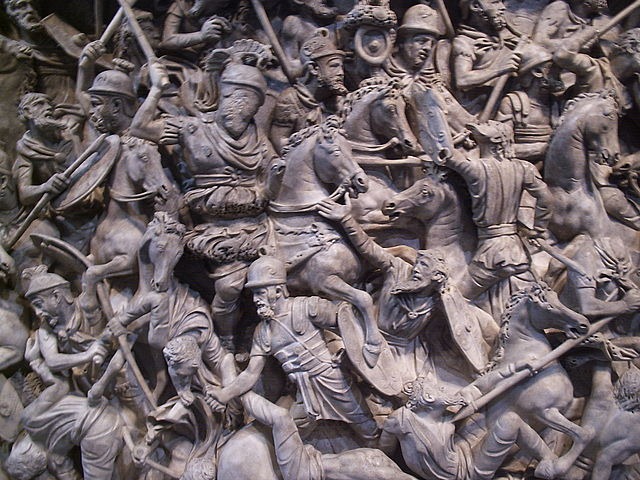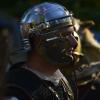-
Брой отговори
15757 -
Регистрация
-
Последен вход
-
Days Won
465
Content Type
Профили
Форуми
Библиотека
Articles
Блогове
ВСИЧКО ПУБЛИКУВАНО ОТ Last roman
-
http://www.youtube.com/watch?v=brBq50KxzDU
-
значи нема смисъл от цялото занимание.
-
значи 'казак' се асоциира и с наемен работник. Няма лошо. Явно не всички юнаци са пиели. Имало и такива, дето са копали на нивата.
-
Te естонците вече са го измислили: http://www.youtube.com/watch?v=mx4wuqBnYCw
-
Те не са идиоти, просто използват деспабилизацията на района за свои цели. За съжаление съм забутал телефона на Хилъри някъде и не мога да я попитам каква е крайната им идея, но тенденцията е съвсем ясна. Пътя на петрола.
-
така е. Подобен тип паразити са възможни само в развитите общества, които изхвърлят често излишъка от храна /демек имат свръхпроизводство/.
-
интересното е, че за обозначение на наемен земеделски работник думата 'батрак' у новгородци съответства на 'казак'. http://dal.sci-lib.com/word000991.html
-
Мезозойската ера е разцветът на голосеменните. От тях към края на Юрския период се появяват покритосеменните /вероятно от цикадовите/. Ето една интересна статия за наследника на първите покритосеменни: http://www.membrana.ru/particle/9993
-
Рафаел Фелмер няма защо да се притеснява за съдбата на еврото или за световната финансова криза, тъй като живее без да използва пари. "Трябва да се отървем от парите напълно", казва 28-годишният германец от Клайнмахнов близо до Берлин, който е част от международното движение "Живот без пари". Много от германските последователи на движението вадят изхвърлена храна от боклукчийските кофи, като предпочитат контейнерите на магазините за органични плодове и зеленчуци, предаде ДПА, цитирана от БТА. В интернет са създадени форуми за такива хора, в които се обсъждат необходимата екипировка както и опасностите за здравето от контейнерите за боклук. Дори се разменят рецепти. Зеленчуци, кисело мляко, тофу - Фелмер е успял да събере доста при последния си "лов" за храна. От законова гледна точка тършуването из боклука на непознати се смята за кражба, но Фелмер го нарича "спасяване". Той обяснява, че взима само храна, за която се твърди, че е развалена и иначе ще бъде унищожена. Фелмер събира достатъчно не само да изхранва себе си, но също приятелката си и тяхната петмесечна дъщеря. "Погледнете това например," казва Фелмер, като показва пакет нормално изглеждащо кафе Хайлендс (Highlands). "Срокът му на годност е изтекъл само преди няколко дни. Това е като плесница в лицето на хората, които работят усилено дни, за да го произведат", добавя той. Може да се твърди, че активистите от "Живот без пари" са една крачка пред движението "Окупирай Уолстрийт", което започна през септември в знак на протест срещу нарастващото икономическо неравенство в САЩ и бързо обхвана и други страни. Представителите на "Живот без пари" не само правят лагери пред банки, за да протестират срещу доминиращата икономическа система, но те я бойкотират, като се отказват от нейното гориво - парите. Фелмер не би трябвало да е принуден да живее от боклука. Той е завършил европеистика в Хага. Произхожда от семейство от средната класа - баща му е архитект, а майка му психотерапевт, лекуващ с помощта на изкуството. Вместо обаче да работи за заплата, той решил да работи за идеалите си. Сега Фелмер е един от лидерите на "Живот без пари" в Германия и пътува из страната да изнася лекции. През повечето време се придвижва на стоп. "Най-често има само по един човек в повечето коли в Германия", добави той. Критиците гледат на хората като Фелмер като на паразити, но той е на мнение, че помага да бъде спасен светът. "Става дума за ресурсите на Земята," посочи той, като има предвид водата, енергията и чистия въздух. "Докато рибните запаси в океана намаляват, а почвата е изтощена, икономиката продължава да расте. Трябва наистина да се развием в свиващо се общество. Ние сме 7 милиарда, а имаме само тази Земя," добавя той. Неотдавна Фелмер пътува до Фрайбург, в Брайсгау, Югозападна Германия, за да говори в училище "Рудолф Щайнер". Учителят Ханс Хуберт Швицлер заявява, че според учителите презентацията на Фелмер е "педагогическа щастлива случайност". "Рафаел е разбрал как да разясни на учениците, че те могат да въплътят идеалите си, дори ако не са съгласни с неговия начин на живот," отбелязва Швицлер. Идеалистът Фелмер обаче не може да живее изцяло без германската социална система. Заради загриженост към дъщеря им Алма Лусия семейството е обхванато от установената от закона здравна застраховка. Разходите се плащат чрез федералните детски социални помощи. http://dnes.dir.bg/news/pari-krizata-ikonomikata-okupiri-bokluka-10608230?nt=4 В България и източноевропейските страни това движение няма да придобие популярност, тъй като ще срещне ожесточена конкуренция от страна на местните 'окупатори'. Освен това и магазините нямат практиката да изхвърлят стоки с изтекъл срок на годност, а ги препродават с преправени етикети.
-
затова този спорт се практикува основно от ергени.
-
Сега остава да кажеш, че ударите в Либия са извършени от Москва.
-
Чувал ли си за Мюсюлманските братя. Проучи въпроса и сам прецени има ли фундаментализъм или не. Давам ти насока за размисъл: http://www.auto-press.net/%D0%90%D0%B2%D1%82%D0%BE_%D0%B3%D0%BB%D0%BE%D0%B1%D1%83%D1%81__Auto_Globe/a:%D0%92-%D0%95%D0%B3%D0%B8%D0%BF%D0%B5%D1%82-%D0%B7%D0%B0%D0%B1%D1%80%D0%B0%D0%BD%D0%B8%D1%85%D0%B0-Chevrolet
-
Свалянето на диктаторските светски режими в Сев. Африка и Близкия изток, и замяната им с религиозни е дело на Запада. В момента Русия и Китай крепят последния светски решим. Така че 'гранд мерси'-то е за 'демократизаторите' от САЩ. Не се и съмнявам, че в близко бъдеще фундаменталистите ще им се отплатят подобаващо за добрината с няколко атентата.
-
А от мен - фосили от онзи период:
-
А добре. А сега да видим дали към казаците от 16-17 век е приложимо понятието башибозук, при положение, че те не са в подчинение на никоя империя, живеят си волния живот и самостоятелно определят външната и вътрешната си политика. Башибозуците /също като индийските пиндари/ е подчинено на империята население, обединено в ирегулярни поделения, което главно разорява въстанали територии и се използва за терор срещу местното население.
-
абе Скуби, оспами цялата тема, не те ли е срам?
-
Ник, смесваш периоди. Последно за кои точно казаци искаш да си говорим - тези от 16-17 век, или тези от 18-19? Щото всяко общество, включително и казашкото търпи развитие. Запорожката сечь възниква от бегълци, които не са склонни да живеят в подчинение нито при руснаци, нито при поляци, нито при турци. Съответно първочалачно организацията и бита на казаците напомнят орда. Военизирано общество, което брани земите си, извъшва грабителски набези по суша и море срещу поляци и турци като отмъщение за техните притеснения. Чел си предполагам Тарас Булба на Гогол. Той описва точно такъв тип казаци. След като казаците са включени в състава на Руската империя, те усядат /не без помощта на Екатерина Велика/. Нещо повече, част от тях са разселени в новозавладените земи в Азия, за да ги държат под контрол. Руската империя започва да използва казашките части в армиите си за активни бойни действия. През 19 век, покрай Столипиновските реформи казаците все повече се превръщат в земеделци на военна служба /разбира се процесът е започнал по-рано, но окончателно придобива тази тенденция в края на 19 век/. Както си личи и от статията, която бях пуснал за казаците в района на Кавказ: Кабардинское влияние отразилось на хозяйственных занятиях гребенских казаков, которые в земледелии стали использовать кабардинский плуг, долго выращивали просо как основную зерновую культуру, разводили скот кабардинской породы. В системе жизнеобеспечения кабардинские элементы просматриваются в употреблении казаками «пасты» (густого пшена, которое ели чаще хлеба), строительстве турлучных жилищ, пошиве одежды по кабардинскому образцу. Таким образом, кабардино-казачьи связи, зародившиеся на заре пребывания гребенцов на правобережье Терека, оказали серьезное влияние на формирование северокавказских черт их культуры И именно като доказателство за земеделието като основен поминък на казаците през 19-20 век е отказът им да встъпват в колхози /след ВОСР/, което пък води до репресии и геноцид срещу тях. Ако бяха неуседнал башибозук, щяха без проблем да попълнят червеноармейските редици с песен на уста.
-
не се бъзикай с палеонтолозите. пробвай да копаш един ден под палеото слънце на пустинята и тогава ще поговорим пак.
-
Военизирани земеделци е по-точното определение. Демек стратиоти. За разлика от казаците, башибозукът е събрана сган от кол и въже, чиято основна цел е плячкосване и тормоз на цивилното население. Обикновено са ползвани за потушаване на бунтове, а не за редовни военни действия към които са напълно непригодни. Тъй като не им се полага заплата, башибозукът /в превод думата означава „повредена глава“/ се издържа от грабеж и мародерство. http://en.wikipedia.org/wiki/Bashi-bazouk
-
Понеже долових едва ли не упрек от Ник, че казаците са ползвали черкеско въоръжение и облекло, предлагам една статия 'Об этнических особенностях казачьих групп': http://slavakubani.ru/read.php?id=1974&page=1 Разглежда се основно смесването на кубанските казаци с кавказците /по отношение на брак, също бит и традиции/. Въобще целият сайт е доста интересен.
-
Рицар, всичко това е ок, но не е по темата. Да не политизираме излишно.



